Five Places You Must Visit During Spring in Croatia
March 10, 2022 - This month, the frigid temperatures and strong winds of winter have already begun to turn into warm and colorful days, thus welcoming spring. Is it worth visiting during this time of year? Of course. And here are five places you cannot miss during spring in Croatia.
Winter in Croatia is a difficult concept to criticize. Despite low temperatures, strong winds, snow, or rain, Croatians have always found a way to positively view the arrival of the winter months. In central and eastern Croatia, the cold and snow are not strong enough to break the spirit of its inhabitants. Winter is synonymous with the holiday season, with cities and towns brightly and colorfully decorating their streets, and filling their parks and plazas with fairs and concerts.
In the same way, along the Croatian coast, the locals take back the cities from the tourists and the storms are intermittent since sunny days predominate. Thus, the people who live in front of the Adriatic find a great excuse to put on their best coats, their sunglasses, and get together with their friends and family to have a coffee in the rivas and old towns of their cities.
However, it is true that when the day darkens at five in the afternoon or the temperature of the sea is too cold to take a dip, summer days are missed throughout the country. For this reason, the arrival of spring is always welcome in Croatia and invites those who reside in the country to venture outside their homes without having to wear more than two pieces of clothing. The beginning of spring in Croatia is March 20, and so that you can plan your next adventure, we share five places that you cannot miss at this time of year.
Zagreb
Perhaps the first thing that comes to mind when thinking of spring in Croatia is some of its 8 national parks or 12 nature parks. However, the Croatian capital of Zagreb is literally a spectacle of colors and a great atmosphere during this time of year. Although the official date for the beginning of spring is still 10 days away, the inhabitants of Zagreb are already witnessing the first blooms in their avenues, streets, and parks. If you're coming to Zagreb during spring, you probably won't know where to start.
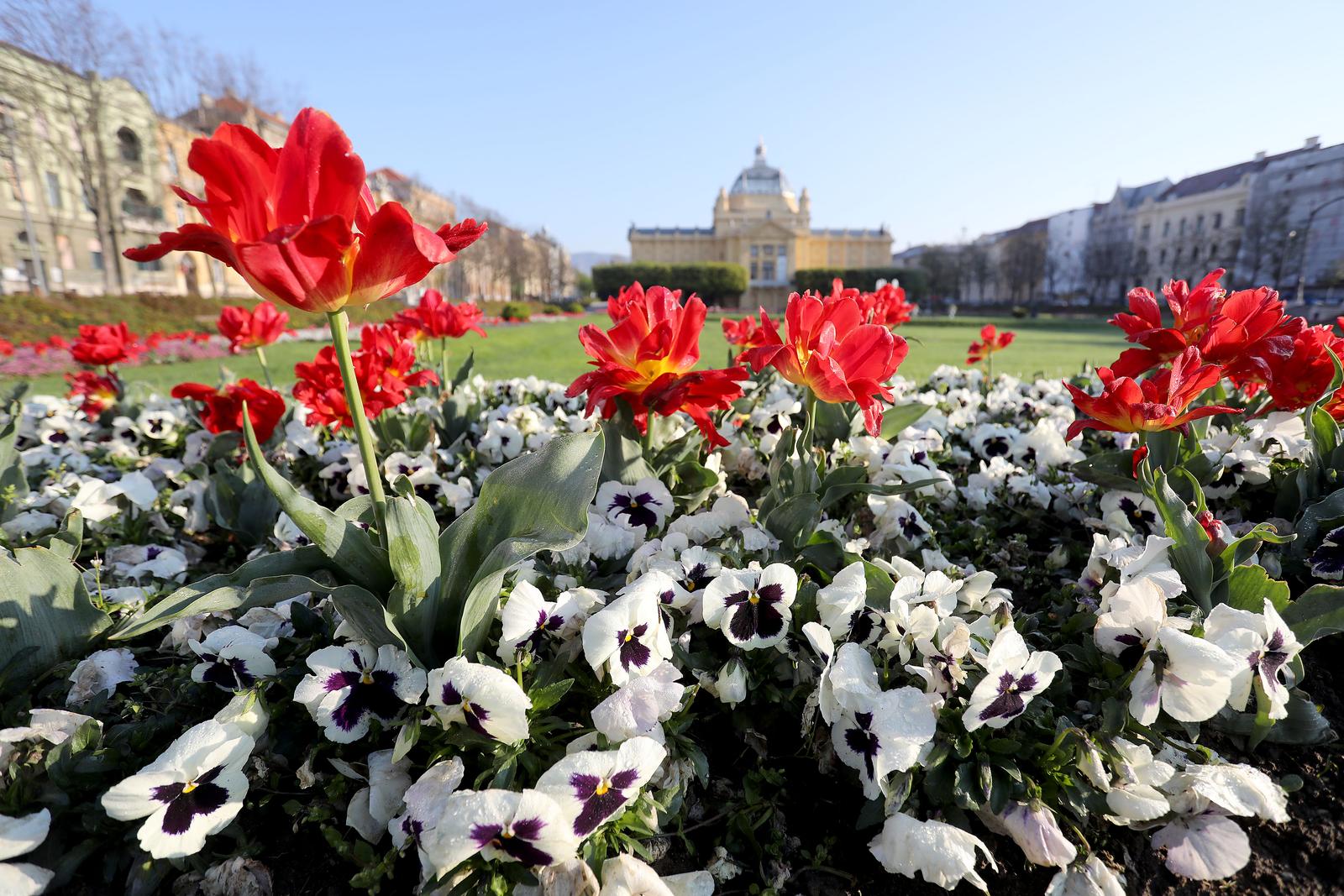
Flowers blossoming in the gardens of King Tomislav Square. (Photo: Patrik Macek/PIXSELL)
Stroll through the beautiful parks in Zagreb's upper town, from Zrinjevac to King Tomislav Square, where you could even sit in its gardens reading a book while enjoying the atmosphere and the colors of its flowers and trees. If you want to go for exercise and at the same time enjoy the blossoming in the spring, visit the parks of Jarun, Bundek or Maksimir, in which you could also organize a picnic with your friends. Or maybe organize a walk through the Zagreb Botanical Garden, in the upper town of Zagreb. You will see that when you get home and check your phone, you will have probably taken more than a hundred photos throughout the day. Zagreb is home to many of the best spots to be during spring in Croatia.
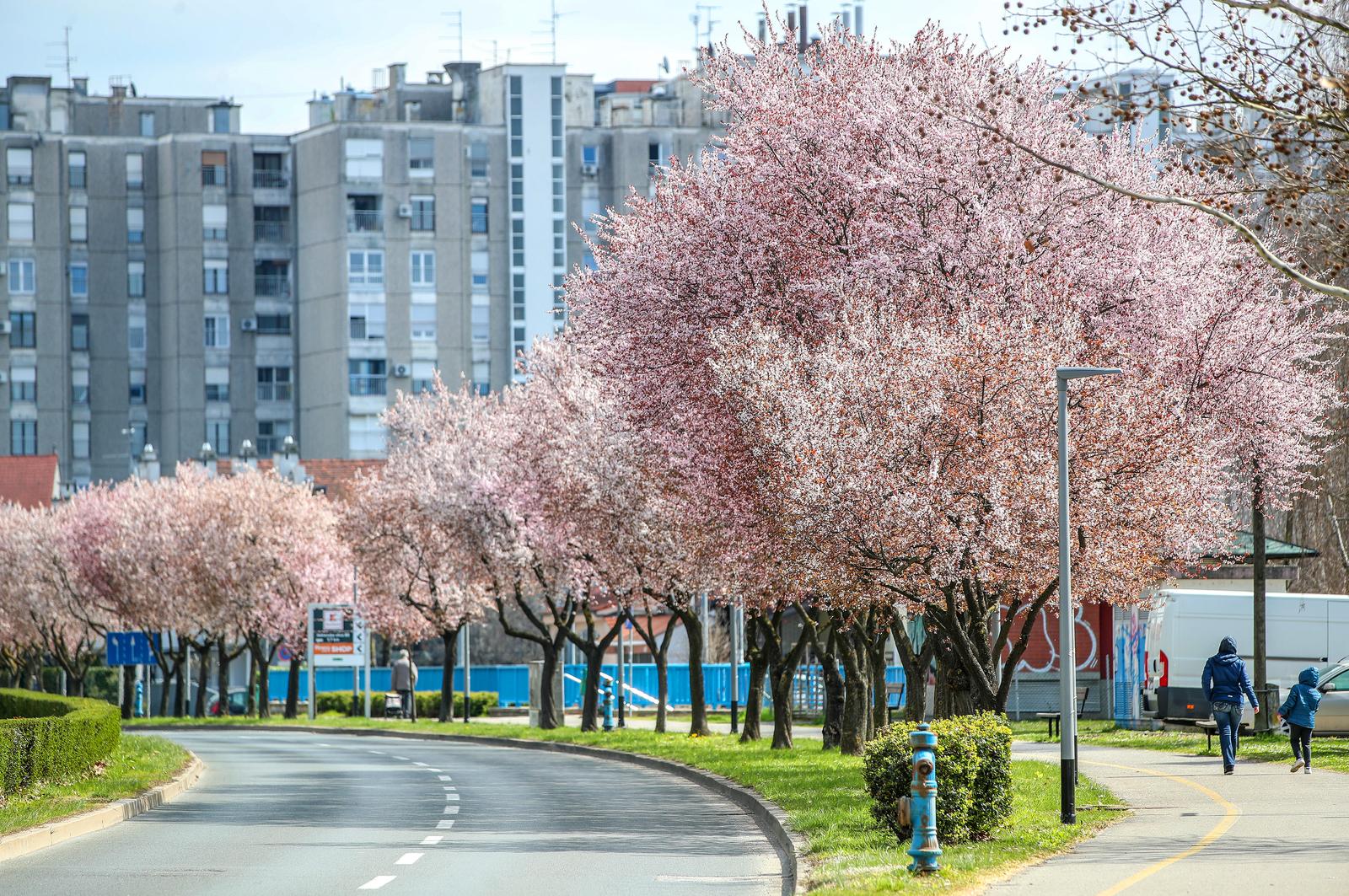
Cherry trees in the district of Prečko, Zagreb. (Photo: Igor Kralj/PIXSELL)
Bonus tip: visit Šulekova street in Zagreb in Spring, which has become famous for its spectacular colors thanks to the blossoming of its cherry trees. Don't forget to go with someone who can take amazing pictures of you for your Instagram!
Plitvice Lakes National Park
It really is impossible not to highlight the national and natural parks of Croatia when talking about a change of season. I do not mention a season in particular because each one offers something magical and different. For example, when we talk about Plitvice Lakes National Park, we cannot compare the four seasons, just enjoy them to the fullest. Autumn's intense red and orange colors beautifully contrast with turquoise lakes, resembling a frame straight out from a fairy tale. Winter covers the park with snow, and the result is a mixture of whites and turquoises that will make your jaw drop. And not to mention the summer, where the green forests also serve as a refuge from the high temperatures with their shade.

Plitvice Lakes National Park, stunning all year round. (Photo: Vedran Bozičević)
But we all know that, in a place as diverse in flora as the Plitvice Lakes National Park, it is essential to witness its colorful show during spring. It's arguably the perfect time, as it's neither too cold nor too hot to overwhelm you as you wander through the park, and it's one of its most photogenic times of the year!
Find HERE the prices and rates of the tickets to visit the Plitvice Lakes National Park.
Split
We also don't want to overwhelm you with a shower of colors, if that's not your thing. And it is not because Split does not have them, but the experience of spring in the Dalmatian city is lived in a different way. Spring in Croatia comes in different shapes and colors. Although the trees and parks of Split are also beginning to regain their leaves and greenery, the arrival of spring means that the return to the sea and the beaches is getting closer. You will feel that wearing a coat could be unnecessary, with temperatures that can rise up to 17 degrees. Even with the water still relatively cold, some brave souls are already starting to visit the city's beaches to take a dip, realizing that the frequent sunny days and rising temperatures will dry them out quickly once out of the water.
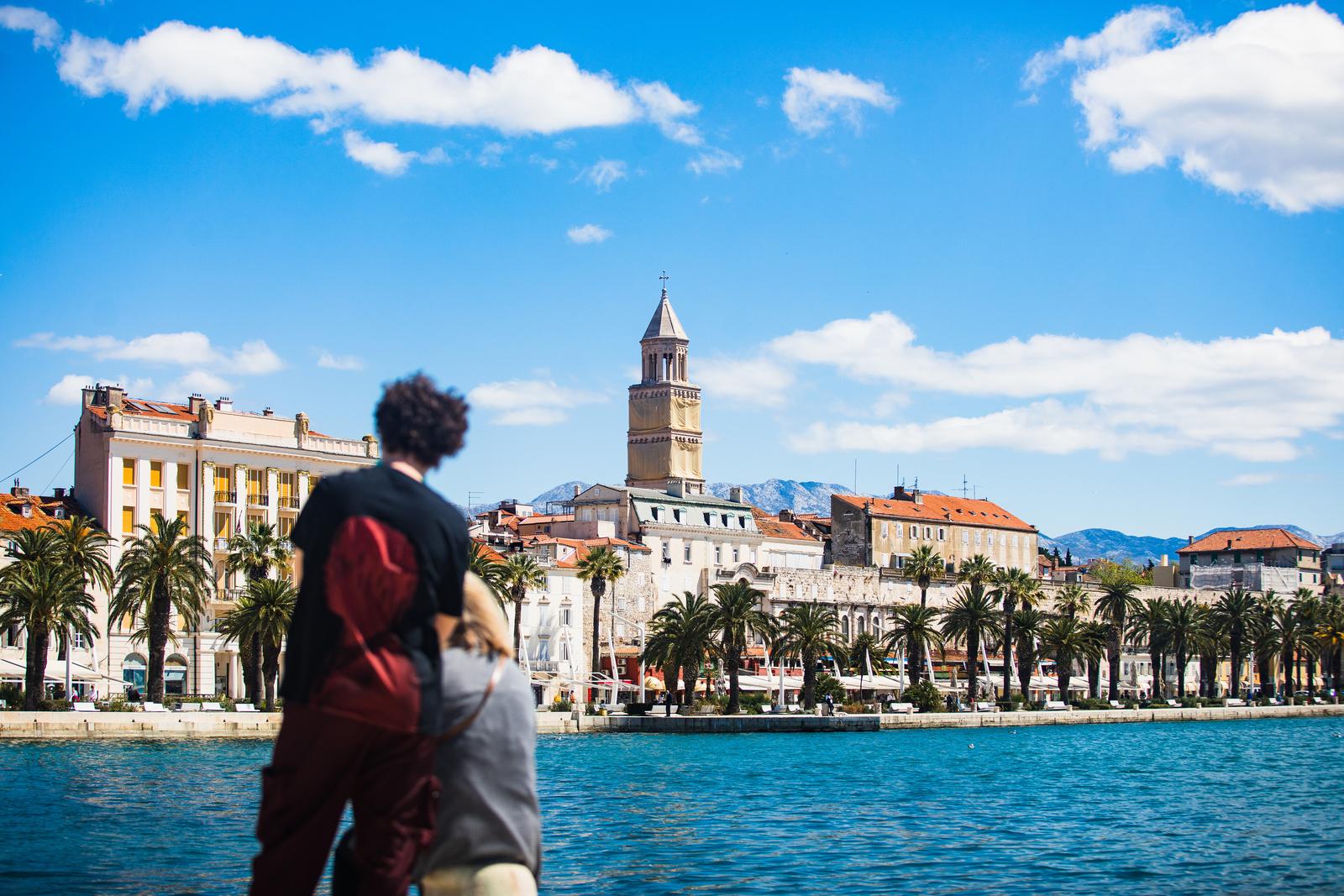
The Diocletian Palace in Split, not during summer, but in April. (Photo: Milan Sabic/PIXSELL)
But without a doubt, the most exciting thing about spring in Split is the progressive reopening of many restaurants, bars, and cafes throughout the season, which have already finished their respective maintenance and are beginning to prepare for the arrival of the busy summer. If you were in Split during the winter, and you will stay here until at least the beginning of summer, you will witness a city that is becoming active every day. Also, ferry lines are starting to increase and you can have the privilege of visiting more islands and destinations without the crowds. And beware, enjoying spring in Split is something that can be replicated throughout the Croatian coast, from Istria to Dubrovnik!
Krka National Park
If you change your mind and would indeed like to see the spring in Croatia blooming at its best, there will always be a national park or nature park near you. The Krka National Park has nothing to envy Plitvice Lakes since its sixteen plunging waterfalls, winding hiking trails, and vast expanse of lush, green forests place it as one of the most visited destinations in the entire country. Krka, apart from being recognized for its spectacular sceneries, is also a very popular destination for adventure lovers. Whether on foot or by bicycle, it is never enough to discover all the wonders that the national park hides. And if you had to pick an ideal time of year to visit, the spring months should be at the top of your list.
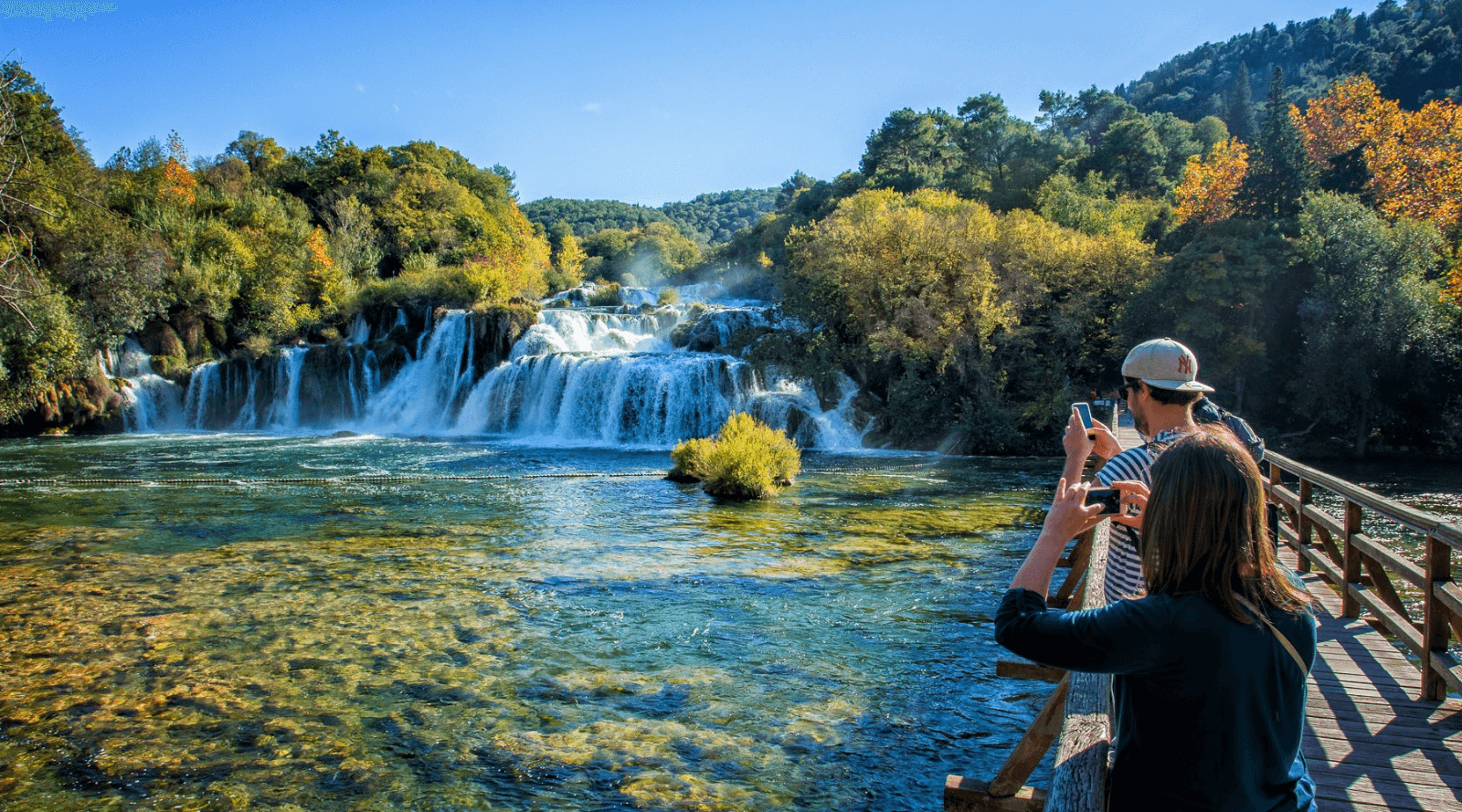
Very close to Šibenik, and less than an hour from Split - Krka National Park. (Credit: Krka National Park)
Although the new measures taken by the National Park, which prohibit visitors from bathing in the falls, have reduced the saturation of people in the main circuit of Krka, summer is still the time of year with the highest volume of tourists. If you are looking to connect better with the nature of Krka, you will surely find it in spring with almost as pleasant weather, colors everywhere, fewer people, and... cheaper prices!
Find HERE the prices and rates of the tickets to visit the Krka National Park.
Osijek
Of course, spring comes everywhere, and not only on the coast and in central Croatia. Moreover, it could be said that spring in eastern Croatia arrives with incomparable intensity. The vast forests, fields, and crops in Slavonia and Baranja are a visual delight both for those viewing it from above with their drones, as well as for those on foot. This part of Croatia is often mistakenly considered a cold, nothing-happening region, but few have the privilege of enjoying its energy and warmth all year round, even in the harshest of winters. And all the more reason, you'll want to check it out for yourself in a season with better weather and full of greenery.
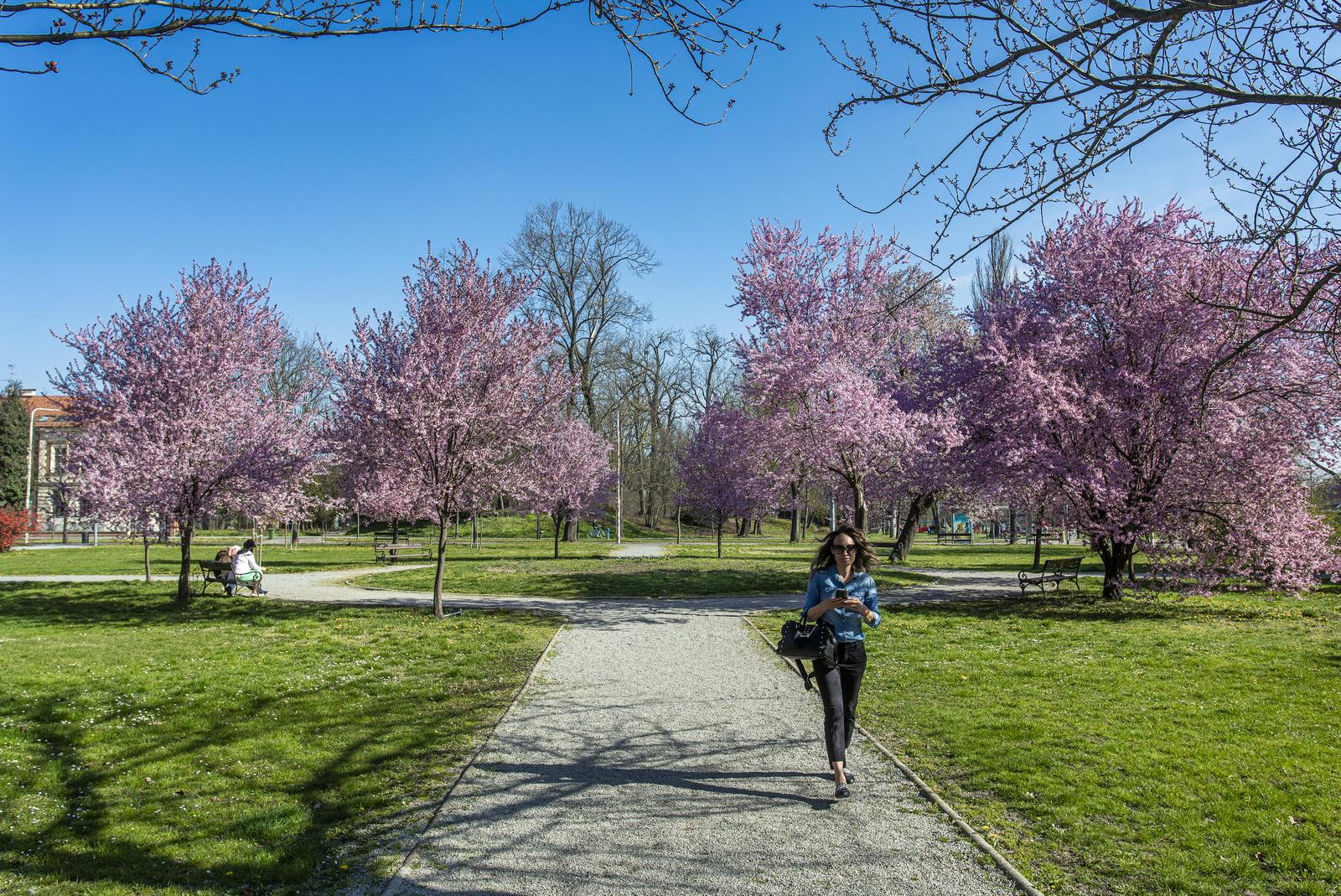
Cherry trees in King Krešimir IV park in Osijek. (Photo: Davor Javorovic/PIXSELL)
There are so many places to visit in this region during spring, but what better place to start than in the largest city in eastern Croatia, and the fourth largest in the country. Osijek is famously known as the greenest city in Croatia, with more parks and public green areas than any other town in Croatia. Wherever you go in Osijek during the spring, you will come across an immeasurable number of trees and gardens full of vibrant colors. Some of the parks that you cannot miss are King Tomislav Park, Sakuntala Park, or King Krešimir IV Park, protected as the first monument of park architecture in Croatia.
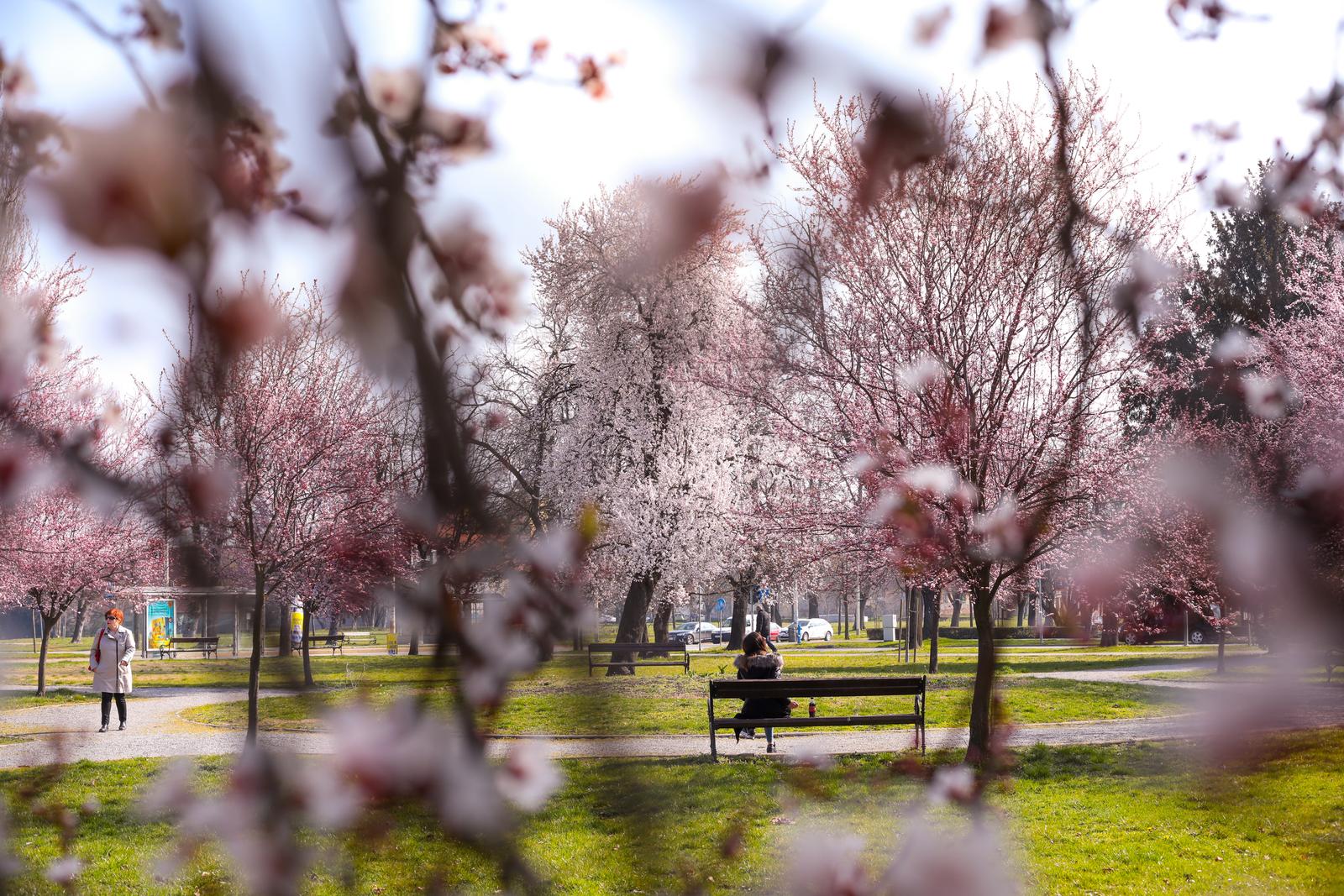
Cherry trees in King Krešimir IV park in Osijek. (Photo: Dubravka Petric/PIXSELL)
These are just five examples of places that you cannot miss during spring in Croatia, but believe us when we tell you that the whole country, throughout its territory, has some magic waiting for you during the most colorful season of the year.
For more on travel in Croatia, follow TCN's dedicated page.
Aminess Opens Hotels and Campsites in Istria and Krk
March 24, 2021 - Good news, as Aminess opens hotels and campsites in Istria and Krk.
Although Croatia’s coastal regions are better known for their summer destinations, clever travelers around the world plan their dream trip during the spring, avoiding the usual crowds and enjoying the fantastic weather at the same time.

Aminess Maestral Hotel in Novigrad, Istria (Photo: Aminess Hotels & Campsites)
The arrival of spring is ideal for getting to know the natural beauties of Istria and Kvarner. Enjoying sunny days, with excellent gastronomy, and staying in nature, is a guarantee of perfect spring vacation. As Turističke Priče reports, tourist company Aminess Hotels & Campsites has announced the opening of its facilities in Novigrad in Istria and on the island of Krk.
The Aminess Maestral Hotel in Novigrad will be the first to open its doors on March 26, while the nearby Aminess Sirena campsite will open on April 1. Aminess Atea Camping Resort and Aminess Gaia Green Villas in Njivice on the island of Krk will welcome their first guests this year, also on April 1.
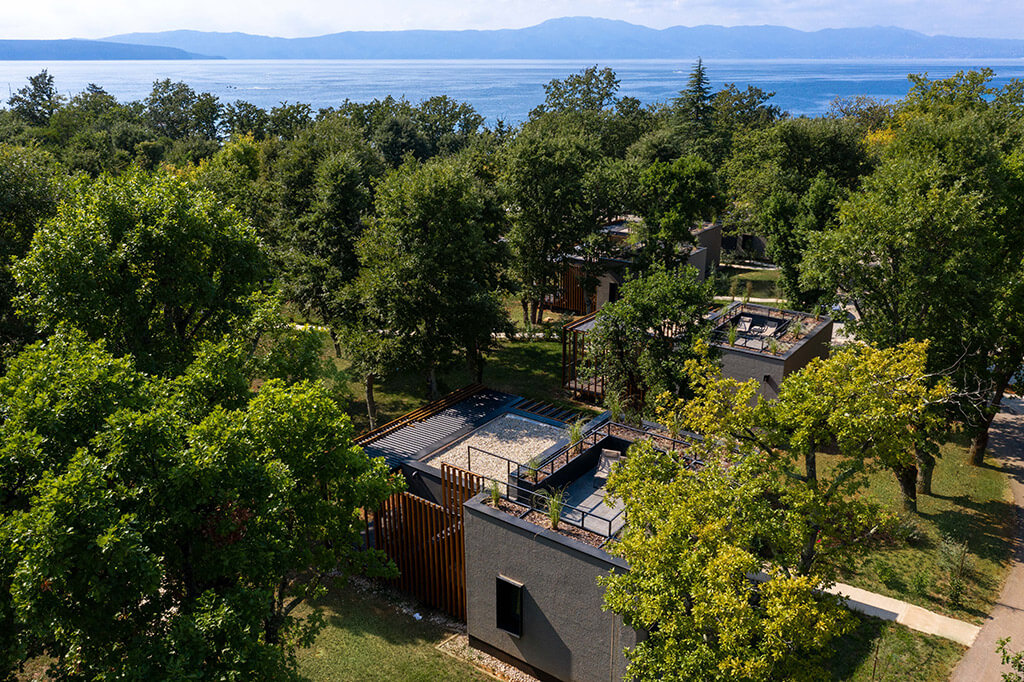
Aminess Gaia Green Villas in Njivice on the island of Krk (Photo: Aminess Hotels & Campsites)
This Easter, Aminess Hotels & Campsites will present a unique gourmet offer, which will be further enriched with the award-winning Aminess olive oil Vergal for all lovers of Istrian delicacies. With its traditional hospitality, modern accommodation, and a rich offer of additional facilities, Aminess will provide all its guests with a pleasant spring break.
‘‘Since the priority is the safety of our visitors, we are proud that Aminess Hotels & Campsites have been awarded the Safe stay in Croatia label, which confirms our investments in all segments of the satisfaction of all our guests. We will do our best to make these holidays a fond memory for all of us’’, said Mladen Knežević, Sales and Marketing Director at Aminess Hotels & Campsites.
Opening for another tourist season, with motivated employees who will strive to provide each guest with an unforgettable experience, Aminess Hotels and Campsites, as in all previous years, awaits their first visitors in a festive atmosphere with a warm welcome and traditional hospitality.
To see the original article click here.
For more information about travel in Croatia, follow TCN’s dedicated page.
Croatia Temperatures Will Reach 20 Degrees This Week: End of Winter?
March 9, 2020 - Temperatures will reach 20 degrees in parts of Croatia this week and above average temperatures are expected Wednesday through Friday. Local meteorologists share their thoughts on whether Winter is officially over.
The Croatia State Meteorological Institute posted a forecast for the coming week and, as things stand, temperatures will rise quite a bit, according to Željka Orešković/Telegram on March 9, 2020. It looks like weather will be spring-like, with alternating sun and clouds, and there may be a few brief showers. However, that doesn’t mean that the definitive end of winter has arrived.
Telegram consulted with the experts, N1 television meteorologist, Tea Blažević, and Nova TV meteorologist, Darius Brzoja, and asked them to provide more detail about what to expect this week. They agreed that we cannot expect a long-term weather stabilization and that the end of Winter cannot yet be confirmed.
Croatia Temperatures Will Reach 20 Degrees Celsius
"The temperature will rise, especially on Wednesday and Thursday. On Wednesday, the Banovina and Kordun areas will be the warmest, where temperatures will reach 20 degrees. On Thursday, however, we can expect temperatures around 20 degrees for most of the interior, and up to 21 in some places, which is definitely above average,” Blažević predicts, adding that she would not speculate on the end of winter because this is quite short-term. Meteorologist Brzoja agreed with her assessment.
"This week will be warmer, especially on Wednesday, Thursday and Friday. In many parts of the country temperatures will reach 20 degrees. It will be warm even in the highlands, where it will be at least 15 degrees, if not more. It will be the same in coastal areas. However, sea temperatures are still cool during the beginning of spring, which does not allow air temperatures to rise as they would on land. Maybe temperatures will hover around 20 degrees along the Southern Adriatic,” he added.
Although it will be mostly dry and sunny until Friday, it will get worse by the end of the week. "Toward the end of the week temperatures will fall again, and they could be even slightly lower than average. This will be compounded by worsening conditions expected on Friday. By Friday it will be mostly dry with light showers at night from Monday to Tuesday,” Blažević says. Brzoja adds that Tuesday will be cool but will be warmer than today.
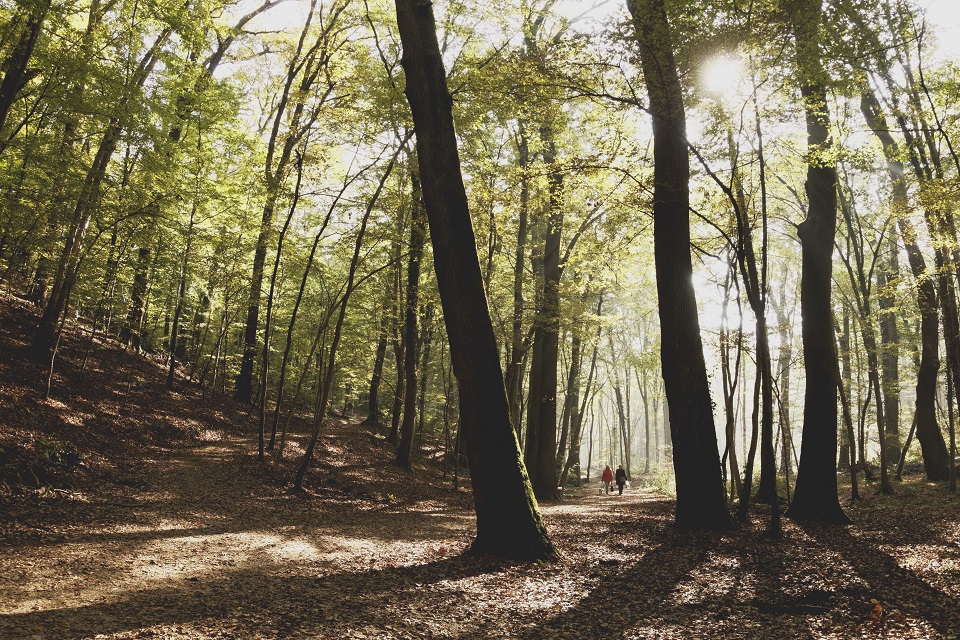
Dario Pribeg | Unsplash
Dry with Intermittent Clouds This Weekend
Although the forecasts for the weekend are a bit more uncertain, except for the rain from Friday to Saturday, it should be relatively dry with intermittent clouds. "It's not going to be a completely sunny weekend. It may rain early Saturday, but mostly dry throughout the day. Problems may arise from by a storm near Velebit. It is expected to start at the end of Friday, and continue into the night on Saturday, which could cause traffic problems,” Blažević says.
Dario Brzoja, on the other hand, foresees colder mornings: “Wednesday to Friday will be a beautiful introduction to spring. It's first sign of Spring, so people will enjoy it and feel the spring coming. However, he emphasized that the mornings will be quite chilly. It will be between 0 and 5 degrees inland, which means that everyone should dress appropriately (in layers) to stay warm enough in the morning and not get too hot in the afternoon."
Follow our Lifestyle page for updates on the arrival of Spring 2020 in Croatia.
Croatia Winter Finished According to Latest Weather Forecasts
According to the most recent forecasts, Winter in Croatia is finished. In the current part of the climatological winter, which began on December 1, we have not yet had a single winter cyclone, and no significant snowfall, even in most of the higher elevations.
According to a report by DHMZ, measurable snow cover has been only recorded at 5 locations in Croatia as of this morning, the most of which was 5 centimeters in Zavižan, which will quickly melt, Istramet reports.
The lowlands of the interior of Croatia have recorded only a brief snowfall this winter, and central Istria has not even had any snow.
Croatia Temperatures Noticeably Above Average
In terms of temperature, we are well above average, especially in the highlands and the Adriatic. The plains of the interior of Croatia have been spared from temperature extremes by a prolonged inversion, but due to the more intense sun and wind, they will be even less frequent in the coming weeks.
Weekly Forecasts Indicate That Winter is Over
According to the ECMWF monthly forecast published on the EFFIS website today, winter in Europe is over.
Specifically, a positive temperature deviation is expected every week until March 1, which is the beginning of the climatological spring. The anticipated temperature deviations have been noticeable and the most evident in Russia, where the real winter breakthroughs are anticipated.
This is not to say that there won’t be any short-lived fronts or maybe cyclones which bring snow, but regarding big winter events, it seems that nothing significant will occur. This is further supported by the fact that less than average rainfall is predicted, which suggests the continued dominance of warm anticyclones, Istramet reports.
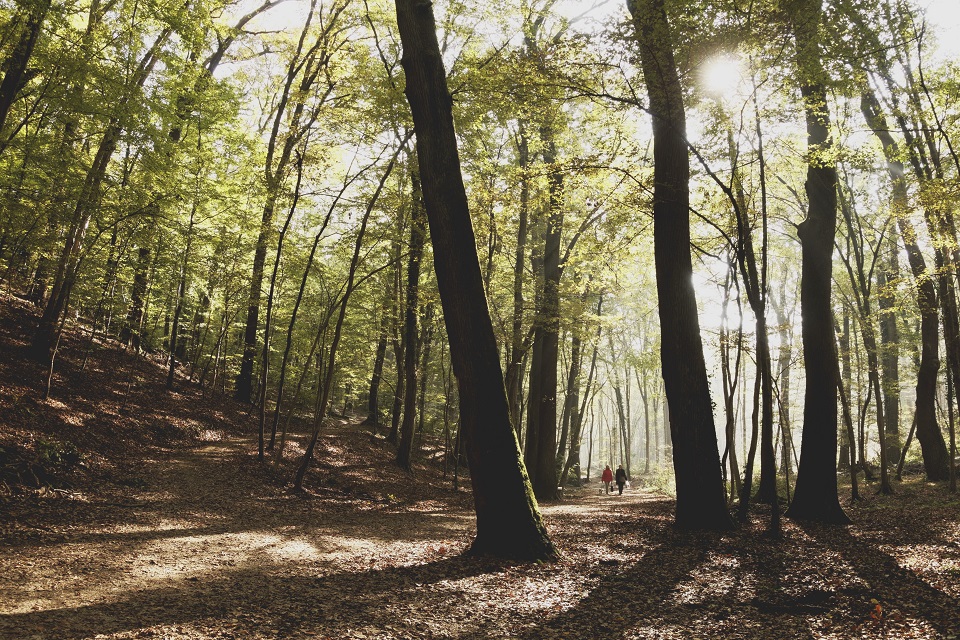
Darko Pribeg | Unsplash
What do long term forecasts say?
The Severe Weather Europe Service also announced yesterday what it expects to happen in February. They also predicted what spring might be like.
Given that high air pressure will remain over much of Europe and Asia, temperatures are expected to be above average for the season during February. This means that there is a greater likelihood that there won’t be any real winter weather over continental Europe. As Severe Weather Europe Service notes, there is always the possibility of a transitional cold pattern as a cold front could cross over Europe, but according to current forecast models there is very little likelihood of this. As we move into February, the polar vortex slowly loses its effect and any major change in dynamics, in terms of the arrival of cold fronts, would be too late to create a sustainable pattern of cold weather.
What kind of Spring is ahead of us?
According to ECMWF's Severe Weather Europe model; it has provided insight regarding what this year's spring in Europe might look like.
The ECMWF model suggests a spring pattern, which is like winter. High air pressure systems are evident in the North Pacific, Western Atlantic and Europe.
Taking the high air pressure into account for March, April and May; air temperatures are expected to be higher than average for this time of year in Europe and Asia.
As for precipitation, drier weather is expected in southern Europe, which correlates with higher air pressure. Continental Europe should experience average rainfall, which means that no long droughts are expected. Lower pressure over the Atlantic could lead to higher rainfall in Central and Northern Europe.

Danijela Froki | Unsplash
Zoran Vakula’s Long Term Weather Forecast
In an interview with Zoran Vakula of Slobodna Bosna, he revealed what to expect in the upcoming months.
"The data from DHMZ meteorological stations confirms that this winter so far is among the warmest, in many places on the Adriatic and in the highlands and among the 10 warmest in since the beginning of recorded weather measurements.”
“Even in long-term forecast calculations of most meteorological centers - there are no expected changes for the remainder of winter. For our part of Europe, it is still very likely that anticyclones - high-pressure fields with relatively frequent temperature inversions will be accompanied by the retention of relatively warm air in higher layers of the atmosphere, which will continue to be noticeable.”
“Therefore, it seems almost certain that the mean air temperature in the highlands and Adriatic will continue to be higher than the average, in many places considerably higher, while long-term fog and low retention clouds could ‘save’ lowlands from those above average highs. If this is the case, we will still have very little rainfall in the winter, but pollution in the lowlands could still be high. But I hope that we will still have some wind, which will make that impossible in the lowlands."
“Regarding summer, I do not have any long-term prognostic calculations, but according to what is available up to July – it is unlikely that there will be any long-term cool periods over the upcoming months in our part of Europe. Unless one arrives at the end of one month and lasts until the beginning of the following month, this isn’t evident in the calculations of the mean monthly air temperature, since periods with above average temperatures will likely prevail.”
“In contrast to this positive temperature deviation, precipitation forecasts are showing an increased likelihood of negative deviations, which are somewhat less than the perennial average. In short, it will be relatively warm and arid in the first part of 2020! But of course, this is what is most likely now, and is not certain. The prognosis is not the diagnosis.”
“With forecasts, it's important not to overlook the probabilities. Sometimes there is an occurrence for which the forecast probability had been low, or even minimal, such as May 2019, which was one of the coldest in known history, although at the end of that April it was only considered a low probability. As it turned out, last May was among the ten, or even four, coldest in most of Croatia,” Vakula points out.
Follow our Lifestyle page for updates on weather forecasts for 2020.
Easter in Primorje: A Springtime Event And A Touch Of Tradition In Klisevo
The eighth consecutive ''Easter in Primorje'' will be held in the village of Klisevo on Monday the 17th of April 2017.
''Sweet Springtime'' Exhibition This Friday at House of Marin Drzic
More good vibes to come from Dubrovnik's much loved House of Marin Drzic this Friday!
OFEL 2017 Will be Held in Dubrovnik This Month
More conferences for Dubrovnik this spring.
More Than 100,000 Arrivals in Dubrovnik in March 2017
If March brings 100,000+, how many will summer bring?
Asparagus Days in Dubrovnik Begins Next Weekend
''Asparagus is sweetest in spring'' is a saying used by several publications and experts on food. If you're in Dubrovnik this month - why not see for yourself?


